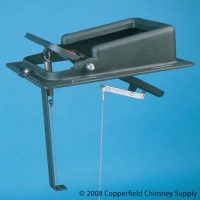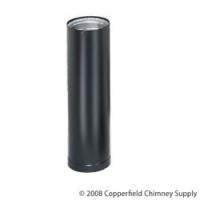Chimney Performance Problems
Chimney performance problems can be caused by a number of issues. The two most common issue are draft and flow. Draft is the force or pressure that causes gases to flow up and out of the chimney and air to flow into an appliance. Draft is a measure of the force that drives the venting system. Flow is a measure of volume of gases that actually pass through the system as a result of draft.
There are several factors that would influence draft and flow, thus affecting chimney performance.
Two of the major factors for draft are:
- Temperature difference between the average flue gas temperature and the temperature of the outside air.
- The height of the chimney.
Three major factors that influence flow:
- Draft
- The amount of flow resistance and flue cross sectional area. Flow is usually the capacity of a venting system and is determined by the way draft and the amount of flow resistance and flue area all balance out in operation.
- The size of the venting passage ways. This is the most critical variable influencing the amount of flow which affects chimney performance. The larger the flue, the greater to volume of gases that will be able to flow through the system in a given time and at a given draft and flow resistance. Measuring the cross sectional area of each flue can compare flow capacities of different flues.
A fireplace may have a chimney that is too small. So what happens is the fireplace opening draws in X amount of air but the chimney cannot handle that amount of volume. So to fix this issue, you will need to make the fireplace opening smaller with a smoke guard.
The same principals of draft and flow apply to fireplace flues and flues servicing stoves or other heaters. There are differences in the way draft and flow balance in various chimney systems.
Chimney performance problems can be divided into three categories.
- Wind induced down drafts
- Flow reversals
- Inadequate flow
Wind induced down drafts and flow reversals cause smoke to flow backwards down the chimney. Inadequate flow indicates that the flow volume is insufficient to handle the amount of flue gases even though the direction of flow is correct.
The solution to wind induced down drafts is to extend the chimney above the turbulence or high pressure zone that is causing the problem. Usually chimney caps, especially those designed to take advantage of the wind, are often the more economical solution to wind induced downdraft problems.
There are several causes for flow reversal problems.
- Interaction between the chimney and the home.
- Another chimney in the home.
- Operating exhaust fans in airtight homes.
- Improperly connected appliance ducting systems.
Solving flow reversal problems
Most of the time, flow reversal problems can be solved by repairs or by supplying the appliance with an alternative source of combustion air. Inadequate flow problems can be the result of insufficient draft or of insufficient flow capacity.
Draft Problems
Inadequate flue gas temperatures cause most draft problems. Anything that decreases the velocity of gases also increases their cooling. The size of the flue and other passageways in the system and the amount of resistance offered by obstacles, bends or debris in the system determine flow capacity. Other flow related problems could be due to air leaks in a chimney. Using a single flue to vent more than one appliance and airtight homes are other obstacles.
Back Puffing
Back puffing can be distinguished from smoking problems caused by wind induced down drafts by the sharpness and force of the puffs of smoke. In back puffing, the stove emits intermittent puffs of smoke due to small explosions in the stove or venting systems. Back puffing is not a true chimney performance problem but is usually mistaken for one when it occurs. Allowing more air to enter the appliance will stop back puffing. Its prevention is entirely dependent on proper operation of the stove.





